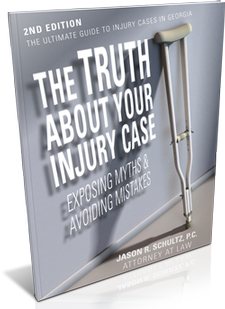In Gregory v. Johnson, the Supreme Court of Georgia explained that the Second Restatement of Torts sets forth five conditions which must exist to prove a liability claim involving a trespassing child:
- The owner must know that the area where the condition exists is one that children are known to trespass upon;
- The owner knows or has reason to know of the condition. S/he must also realize, or should realize, that the condition involves an “unreasonable risk of death or serious bodily harm to such children;
- The children, because of their youth, must not understand the risk they are undertaking by interacting with the object or the area around it;
- The cost of maintaining or eliminating the condition is “slight as compared with the risk to children involved;” and
- The owner did not “exercise reasonable care to eliminate the danger or otherwise to protect the children.”
What is an attractive nuisance?
Any type of artificial object that might lure a child can be an attractive nuisance. Below are just a few examples:
- Swimming pools
- Old appliances (e.g., washers and dryers, refrigerators, deep freezers, etc.)
- Trampolines
- Playground equipment
- Abandoned cars
- Exercise equipment
- Old barns
- Stacks of wood
Does the attractive nuisance doctrine apply to minors of all ages?
Property owners often try to refute liability claims involving children by arguing that the child “knew better.” However, minors’ maturity is individualized, which complicates these types of cases.
In Georgia, the standard of care for children is a subjective issue. The state’s “tender years” doctrine usually comes into play, which allows the courts to decide whether a minor was capable of understanding the risks associated with trespassing.
The courts usually presume young children under the age of five are incapable of comprehending the risks and therefore incapable of contributory negligence. Whether the court holds a child older than four liable for his/her own injuries depends on the child in question.
Do I have a valid liability claim for my child’s injuries?
Liability claims involving child trespassers are unique and complex. There are various elements of these cases that are open to the court’s discretion. To determine whether you have a valid case, the first step is to review your case with a premises liability attorney at the Law Office of Jason R. Schultz, P.C.
Jason will review the specifics of your case, determine liability, and discuss your options with you. If you have a solid claim on your hands, he can then get to work on gathering supportive evidence, contacting the property owner’s liability insurance company, and building your case.
Note, the property owner (defendant) might defend against the claim by trying to pin part the blame on you or your child. This is called contributory negligence. The defendant may argue that your child was mature enough to weigh the risks or that you should have kept a more watchful eye on your child.
If this occurs, Jason can argue the opposite and present evidence on your behalf. But even if the defendant’s arguments hold up, you can likely still recover a significant portion of the damages associated with your case.
What types of damages can I recover for my child’s injuries?
If you win a liability case for your child’s injuries, you can recover damages for various losses, including:
- Medical bills
- Disability and disfigurement
- The cost of taking care of your child
- Loss of quality of life
- Funeral expenses, loss of love and support, and other death benefits in fatal cases
To learn more about your legal rights regarding child injury claims, contact the Law Office of Jason R. Schultz, P.C. for a free, no-obligation consultation today.


